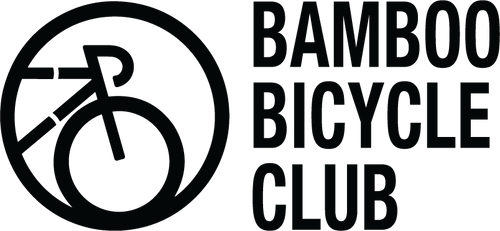Miles is a British product designer and developer, with management and multidisciplinary skills, and a strong focus inside the cycling industry. He is currently taking some time for research, aiming to grow his fundamental knowledge in the principles and mechanisms of a circular waste economy and sustainable business future. You must follow and listen to Mile's incredible podcast mpact cycle which he describes as 'musings from the bicycle about a sustainable future through design." We hope you enjoy reading about Mile's experience of building his Bamboo MTB touring frame with us.
Design: Custom MTB Touring
Build: 2-Day frame building workshop
Duration: 2 days
Location: London, U.K
What made you decide to build a bamboo bike?
I have been researching and writing about sustainability in design and particularly the bicycle industry, the industry my career has been focussed around. Through this research, I found the Bamboo Bicycle Club courses and thought it would be an amazing way to understand more about some of the natural materials I’d been researching. I was also pining for a rigid MTB after a lot of cycling in New Zealand on a gravel bike that was a little out of its depth. I’d gotten the ‘rigid MTB fever’, so it was perfect timing. 
Did you enjoy building the bicycle from scratch and would you recommend the experience?
I absolutely loved it. It exceeded my expectations by far. Knowing that you will be able to use a product when you’ve finished designing and making it, even as a product designer, it’s still quite an adrenaline rush. I think this was especially enhanced by being in the workshop with James, receiving his depth of knowledge, and being able to ask in depth technical questions, questions of context and also of philosophy. In the end, I interviewed James for my blog, Mpact Cycle, as he was such a treasure trove of thoughts and ideas, and was so willing to share them.

What did you find most difficult about your bike build?
The most difficult part was definitely trying to understand how best to work with the material with the various tools and processes needed. Bamboo is not just wood, it is a particular type of wood, so even if you are used to woodworking, you still need to learn quickly in order to work with the material/s rather than ‘against them’. This element was simultaneously the most difficult, and the most interesting.
I also struggled a bit with alignment and measuring. Measure twice, cut once!

What was the easiest part of the build?
If we exclude fitting all the components and finishing parts (something I’ve done for many bike builds previously), then I would say the wrapping of the lugs. It was both fun and really easy, even with sticky hands. It felt natural, and as long as you give a little bit of extra concentration to note where you have and haven’t laid the flax fabric before laying down the next layer, it feels like an enjoyable breeze.
How would you describe the ride of your finished bike?
Due to the dropped seat stays and the unique yoke design (the chainstay area just behind the bottom bracket) that we used to ensure the wider tyre spacing, the ride is really compliant on the back end. But it still feels responsive enough for this genre of bike, especially with the right tyres.Even with an offset IS mount, braking feels direct, giving me a feeling of confidence when riding in the hills.
I’m yet to use it over very rough terrain, but I’m sure it’ll smooth it out nicer than a rigid AL rig. I’d say it’s probably akin to a steel frame in terms of ride quality and comfort.

What would you improve about the build experience or your finished bike?
I made some mistakes that threw some of the alignment off, making the bike even more ‘special’ to me. I’ll be altering them with James’ guidance. This all occurred because I didn’t pay attention, as James had instructed me, to the initial frame alignment. If i started again, I’d have made more checks whilst fitting and altering the tubes and their miters, to ensure the best possible alignment. Totally my mistake, it’s all a learning process, and even with its ‘unique features’ it rides great and everything works perfectly.---
To learn more from Miles, have a look at his Instagram @miles_bartholomew_gibbons and make sure to check out his website http://www.themilesgibbons.com where you can read about his research and get some insight in sustainability from a wonderful archive of interviews.



